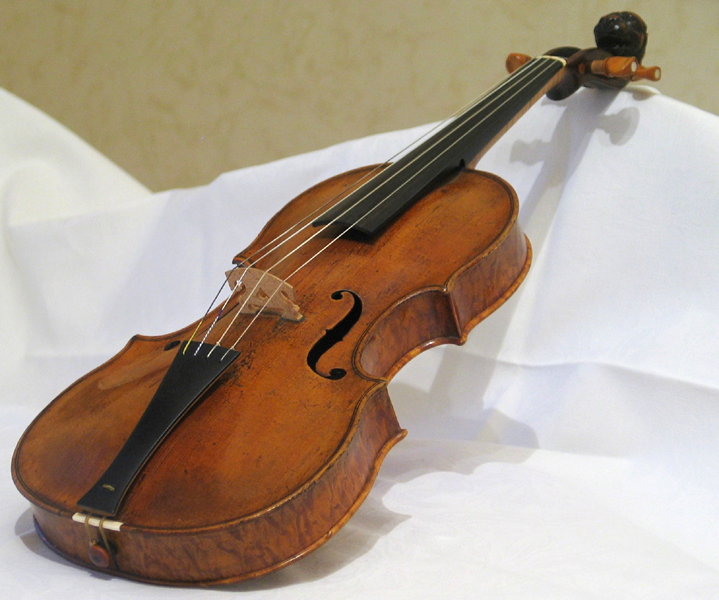
A Baroque violin is a violin set up in the manner of the baroque period of music. The term includes original instruments which have survived unmodified since the Baroque period, as well as later instruments adjusted to the baroque setup, and modern replicas. The differences between a Baroque violin and a modern instrument include the size and nature of the neck, fingerboard, bridge, bass bar, and tailpiece. Baroque violins are almost always fitted with gut strings, as opposed to the more common metal and synthetic strings on a modern instrument, and played with a bow made on the baroque model rather than the modern Tourte bow. Baroque violins are not fitted with a chin rest and are played without a shoulder rest.
There was no single standard model of violin in the Baroque period. Then, as now, instruments were made by individual craftsmen, to different fashions. The neck of a Baroque violin can be at a shallower angle to the body of the instrument than is the case on a modern violin, but again there was a great deal of variation. The neck angle can result in less pressure being exerted on the bridge from the strings. The old neck was also generally glued to the violin’s ribs and nailed from the inner top-block through the thicker, more gently sloped neck-heel, while the modern neck is mortised into an opening cut into the ribs and upper edge of the violin.The bridge in turn is shaped differently, with less mass and greater flexibility in the upper half, owing to the high placement of its “eyes”—holes on either side.
The fingerboard on a Baroque violin is also shorter than that on a modern violin. During the Baroque period, the use of higher positions on the violin increased. In 1600, the highest note in regular use was the C above the E-string, while by 1700 the A one octave above the E-string was relatively common (being, for instance, the highest note used in Bach’s violin music). Virtuoso violinists throughout the period continued to push the boundaries of possibility, with Locatelli reputedly playing in 22nd position. Baroque violins are typically strung with gut E, A and D strings, and either a plain gut G or a metal-wound gut G. The guts in question are those of sheep, wound into a material historically referred to as “catline”, and occasionally (if inaccurately) referred to as cat-gut.
Source: Wikipedia